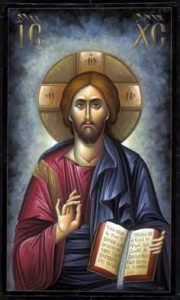 realize that this article becomes, at times, very technical. What I am trying to present is the idea that the books we now see as a part of the New Testament (NT) were only gradually chosen from a number of writings that were extant in the early Church. We have seen that by 200 CE the Gospels, the Pauline epistles, Acts, 1 Peter and 1 John had come into general acceptance; and that by the end of the 4th century in the Latin and Greek Churches there was general acceptance of the 27-book canon of the NT. However, this development cloaks some difficulties that should be understood.
realize that this article becomes, at times, very technical. What I am trying to present is the idea that the books we now see as a part of the New Testament (NT) were only gradually chosen from a number of writings that were extant in the early Church. We have seen that by 200 CE the Gospels, the Pauline epistles, Acts, 1 Peter and 1 John had come into general acceptance; and that by the end of the 4th century in the Latin and Greek Churches there was general acceptance of the 27-book canon of the NT. However, this development cloaks some difficulties that should be understood.
Although in the 2nd century the Pauline epistles and then the Gospels came into acceptance, just when did this acceptance mean that Christian writings were being put on a par with the Jewish Scriptures? Why did the concept of the NT emerge? In 2 Peter 3:16, we find writings of Paul put on a par with “the other Scriptures,” but we are not certain that this indicates total equality with the Old Testament (OT). (You will recall the that the OT was considered to be the inspired word of God). By the mid-2nd century, Justin witnesses to the fact that the Gospels and the writings of the apostles were being read in conjunction with the OT at Christian liturgical services. About the same time Clement cites Isaiah and then Matthew as “another Scripture.” Probably, however, it was Marcion, with his rejection of the OT in favor of a truncated collection of 10 Pauline epistles and Luke, who brought to the fore the belief that the Christian writings form a unity with the OT. In listing the Jewish Scriptures, Melito of Sardis speaks of them as the books of the OT, seeming to imply the idea of the NT. Tertullian, ca 200, is the first one to use the actual phrase “New Testament.” This coincides with the appearance of lists of NT books and Origen’s list – a sign that the concept of a collection of Christian Scriptures has taken hold.
Remember, the early Church saw itself mainly as “reformed” Judaism, since Judaism was called into existence by God Himself. The original intent was not to build a “new religion,” but, rather to reform the “old religion” that they felt was the “true religion.” Remember also that Jesus was seen as the fulfillment of Judaism!
